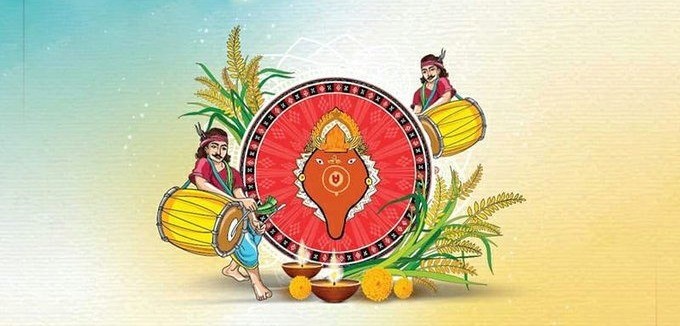Description

Disclaimer: Copyright infringement not intended.
Context
- President Droupadi Murmu greeted citizens on the festival of Nuakhai and wished for the prosperity of the country and its people.
- Nuakhai is a festival celebrated in the western districts of Odisha where the first produce of the field is offered to the goddess and people seek the blessings of elders in each household.
- The festival is mostly celebrated in Sambalpur, Bargarh, Jharsuguda, Bolangir, Kalahandi, Nuapada, Nabarangpur, Deogarh, and Sundergarh.
Details
- Nuakhai is a significant agricultural festival celebrated primarily in the Indian state of Odisha, particularly in the western regions.
- It is a joyous occasion observed by the farming community to express gratitude to the divine for a bountiful harvest.
Origin and Significance
- Nuakhai has ancient roots and is believed to date back to the Vedic period.
- The word "Nua" means "new," and "Khai" means "food."
- The festival is named so because it involves the offering of newly harvested rice to the presiding deity, Maa Samaleswari, the goddess of fertility and prosperity.

Date and Timing
- Nuakhai is celebrated on the Panchami Tithi (fifth day) of the lunar fortnight in the Hindu month of Bhadrab.
- It typically falls in the month of August or September, marking the end of the monsoon season and the beginning of the harvest season.
Rituals and Celebrations
- Prayers and Offerings: The day begins with families offering prayers to Maa Samaleswari and seeking her blessings for a good harvest in the upcoming agricultural season.
- Ritualistic Bath: People take a ritualistic bath and wear new clothes to mark the auspicious occasion.
- Nabanna: The main ritual involves offering the first sheaf of newly harvested paddy to the deity. This is called "Nabanna" or "Navanna."
- Feasting: After offering Nabanna, families prepare a special feast consisting of various traditional dishes made from the newly harvested rice and other seasonal crops.
- Music and Dance: Cultural programs, folk dances, and traditional music are an integral part of the celebrations. People come together to sing and dance, showcasing the rich cultural heritage of the region.
Regional Variations
- While Nuakhai is primarily associated with Odisha, variations of the festival are also celebrated in neighboring states like Chhattisgarh and Jharkhand, where it is known as "Nuakhai Parab" or "Nabanno."
Social Significance
- Nuakhai is not just a religious festival but also a social and cultural celebration. It strengthens community bonds, promotes harmony, and instills a sense of unity among people, especially in rural areas.
Agricultural Importance
The festival holds immense agricultural importance as it marks the culmination of the sowing season and the beginning of the harvest season. It is a way for farmers to acknowledge the divine blessings for a prosperous harvest and to express gratitude for the food they will reap in the coming months.

Conclusion
Nuakhai is a time-honored festival in Odisha that celebrates the richness of the state's agricultural heritage. It is a day of thanksgiving, cultural expression, and community bonding, where people come together to rejoice in the abundance of the harvest and seek blessings for future agricultural endeavors.
|
PRACTICE QUESTION
Q. Which Hindu festival, known for its significance in the agricultural calendar and celebrated with the offering of the first sheaf of newly harvested paddy to the deity Maa Samaleswari, is primarily observed in the western regions of Odisha?
A) Makar Sankranti
B) Pongal
C) Nuakhai
D) Baisakhi
Answer: C) Nuakhai
|
https://newsonair.com/2023/09/20/odisha-celebrates-nuakhai-festival-with-prompt-and-gaiety/















